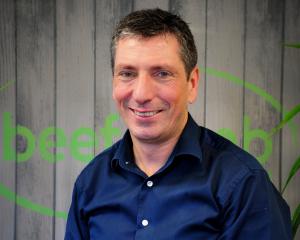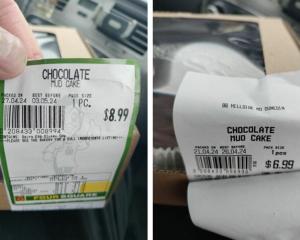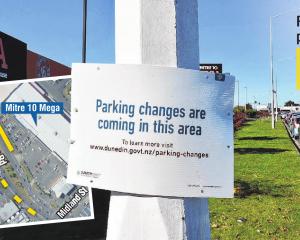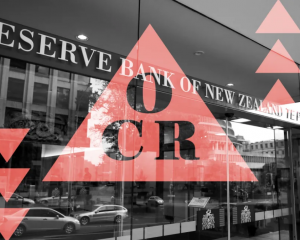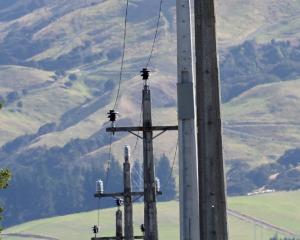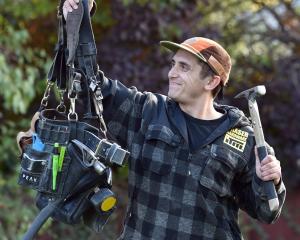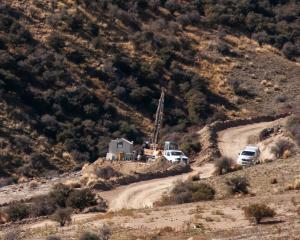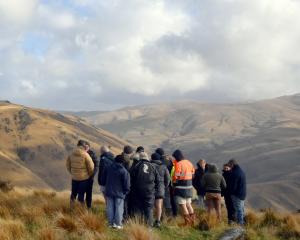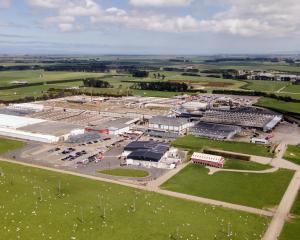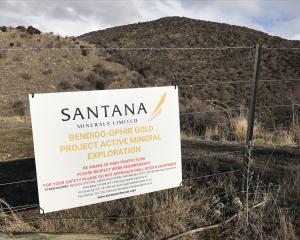Sealegs founder and chief executive David McKee Wright is on something of a high when contacted by the Otago Daily Times.
The phone call came right after Sealegs announced it had delivered its 1000th craft and reported a profit of $551,000 for the year ended March - all in the same year.
It had been a long time coming, Mr McKee Wright said in an interview. Ten years to be exact. Last year, the company reported a loss of more than $2.3 million.
Asked what caused the turnaround in fortunes for the company, Mr McKee Wright said the company had focused on too many good ideas and had spread itself too thinly.
While on a three-year hiatus from Sealegs, Mr McKee Wright took a step back and watched from afar. He realised the management of his company was spending a lot of money to develop "wonderful ideas'' without making any money.
"We know many businesses can have wonderful ideas that will not necessarily make any money. Unless you are solving the problems, you can't make it successful.
"This year, we stopped everything else. We stuck to our core competency and it paid a return.''
Ten years was a long time to wait for a positive return and Mr McKee Wright reflected on the amount of money, effort and time he and others had put into developing what was becoming a highly-recognisable Kiwi company.
However, he believed the company had turned a corner by deciding to focus on the sale and manufacture of amphibious craft and amphibious enable systems.
The company built and sold 98 craft in the year ended March. Sealegs had adopted an original equipment manufacturer (OEM) strategy, where Sealegs made a hull fitted with its own technology which was used by another company. Letting it use an existing manufacturer's scale helped reduced fixed costs. Of the 98 sold internationally and domestically, 14 were OEM hulls fitted with Sealegs technology, compared with one in 2015.
Asked about the market for the boats, Mr McKee Wright said the customer list included a "who's who'' of the world and he knew from the start that was the market he had to target. The company sold boats into 50 countries.
Sealegs was not a traditional boat that was seen at a boat show.
"We went for high net worth individuals who live near the water and have an active lifestyle. Some Europeans live by the water and look at it rather than getting on it. We don't target them.''
Mr McKee Wright described it as "blazing a trail'', copying what the boat people did but not from inside the boat show market.
He now saw clusters of the boats around the world, including 70 on Waiheke Island.
When targeting a wealthy client, he had a sound strategy. He likened it to someone deciding putting wheels on suitcases was a good idea. No-one bothered lugging suitcases around like they did in the 1970s and he was planning for people to not have to launch boats stern first. It was much safer to launch bow first, driving into the water from the beach before lifting the wheels of the amphibious craft.
"I get people out in the sun boating. People love seeing a boat drive up the sand and into their garage. I never tell them the price until they had been out on the boat and seen the video. Then I tell them the price.''
Another market had opened up for the company, particularly in the flood crisis market in Asia, he said.
Asia was becoming more prone to monsoon flooding and poor people were quickly up on their roof to safety, becoming isolated in the process.
In most cases, the only way to get those people out was by helicopter, which was expensive and not always suitable, Mr McKee Wright said.
Sealegs could provide a cost-effective means of rescue.
Malaysia and Indonesia were obvious markets for the company and providing rescue boats meant governments were buying them rather than individuals.
Another market he intended to target this coming year was the US marines. For many years, the marines had been fighting in the deserts of the Middle East and Afghanistan. President Barack Obama had brought the marines back to the US and they were returning to their post-World War 2 amphibious craft.
"Now the warships cost $3 billon each, they don't want them too close to shore where they can be attacked. They want the ships safe on the horizon with amphibious boats to deploy to land at speed. Sealegs can do that and that's a massive opportunity for us. They are almost saying 'we need Sealegs'.''
Getting in front of some of the big hitters in the armed forces was a problem but Mr McKee Wright had started the process. Many former Defence Department staff had moved into the private sector, becoming consultants for lobby groups. Those consultants put people like Mr McKee Wright in front of the right people.
"We are already in that process. The operating spending for the US military is bafflingly large. It's a crazy number and an avenue worth pursuing.''
There were several competitors testing the market at present. He forecast some of the competitors would go broke before they matched Sealegs. The New Zealand company was listed on the NZX, it was small, lean and versatile, making it hard for others to copy. And others also had to deal with patents owned by Sealegs on the way, he said.
What was important to him was the Sealegs craft being built from start to finish in New Zealand. The company employed 65 people, and with Mr McKee Wright coming out of a technology background, Sealegs was using technology aggressively to keep its operations efficient.
"I wrote to all the staff telling them we know Sealegs is a great product and now others can see that as well. When you are losing money, people think it can't be that good. But when you are turning a profit, you have credibility and that is outstanding. I am proud to be leading a team like this.''


